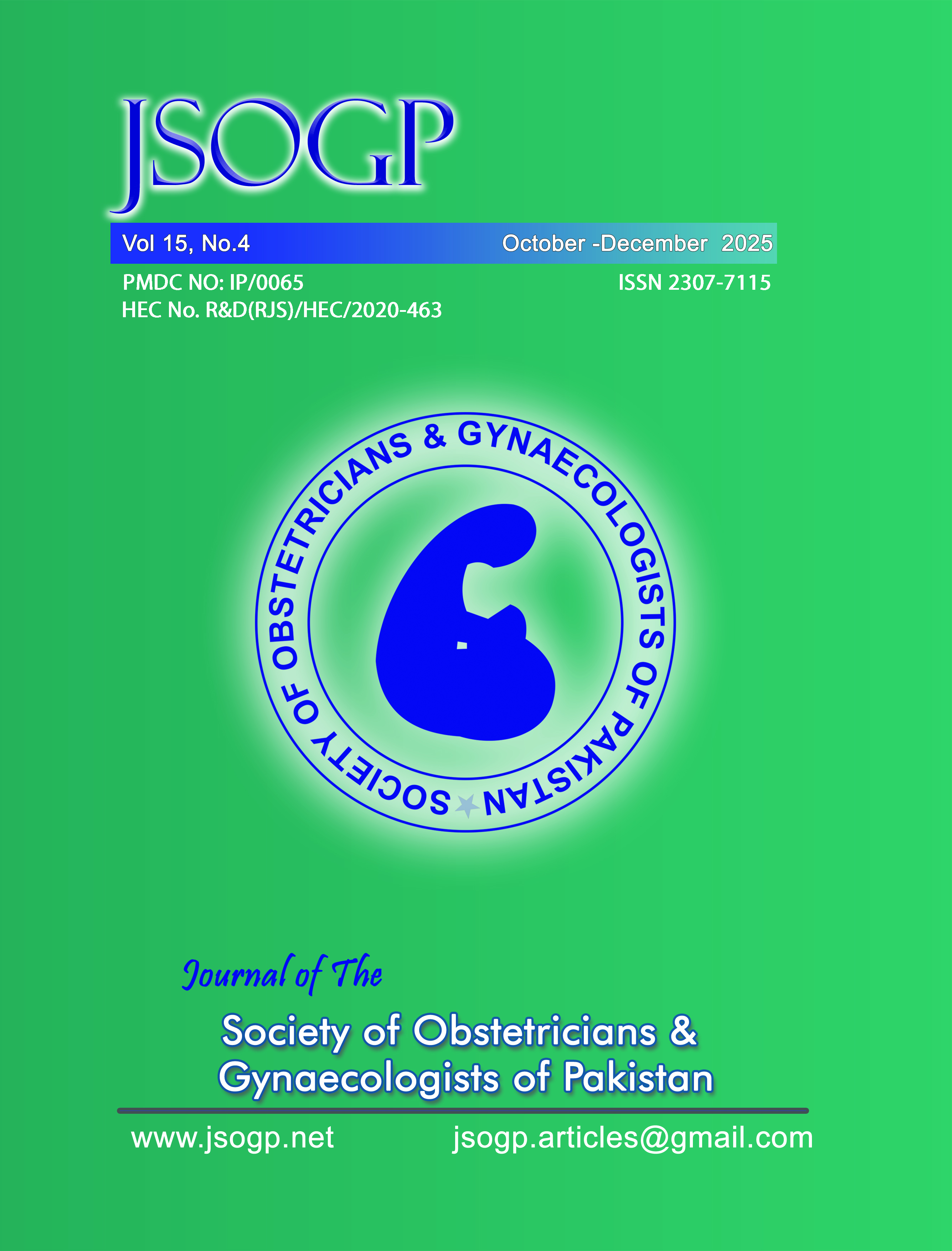Inter-Pregnancy Interval: A Clincher for Obstetric Outcome
Abstract
Objective: To examine the association between interpregnancy interval (IPI) and obstetric outcomes among women delivering at a tertiary care hospital.
Methodology: This prospective observational study was conducted at the Department of Obstetrics and Gynecology, Jinnah Hospital Lahore, from January to June 2025. A total of 176 booked pregnant women with parity 1–4 and interpregnancy intervals of <18 months and 18–24 months were enrolled. Women with chronic illnesses, multiple pregnancies, or grand multiparity were excluded. Participants were followed throughout the antenatal period until delivery to record maternal and perinatal outcomes. Data were analyzed using SPSS version 28. The Chi-square test and t-test were applied, with p < 0.05 considered significant.
Results: Most mothers (55.7%) were aged 20–30 years, and 58.5% belonged to the lower socioeconomic class. The majority (75.6%) delivered by caesarean section. Fetal outcomes showed 25.0% of babies had low birth weight and 13.6% were preterm. Maternal complications included anemia (17.0%) and gestational diabetes (8.0%). A statistically significant relationship (p = 0.000) was found between short interpregnancy interval and adverse maternal and fetal outcomes. No significant association was observed between interpregnancy interval and sociodemographic variables.
Conclusion: Short interpregnancy intervals (<18 months) are significantly associated with adverse obstetric outcomes, including anemia, preterm birth, and low birth weight. Promoting optimal spacing between pregnancies (18–24 months) through postpartum counseling and family planning can improve maternal and neonatal health outcomes.
Copyright (c) 2025 Journal of The Society of Obstetricians and Gynaecologists of Pakistan

This work is licensed under a Creative Commons Attribution-NonCommercial 4.0 International License.

